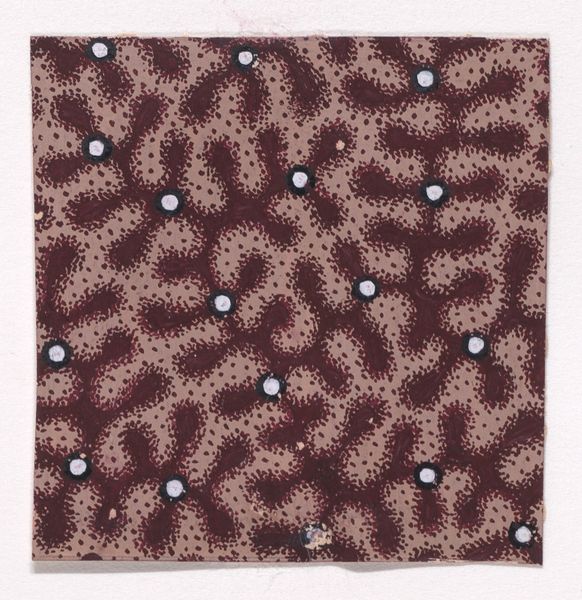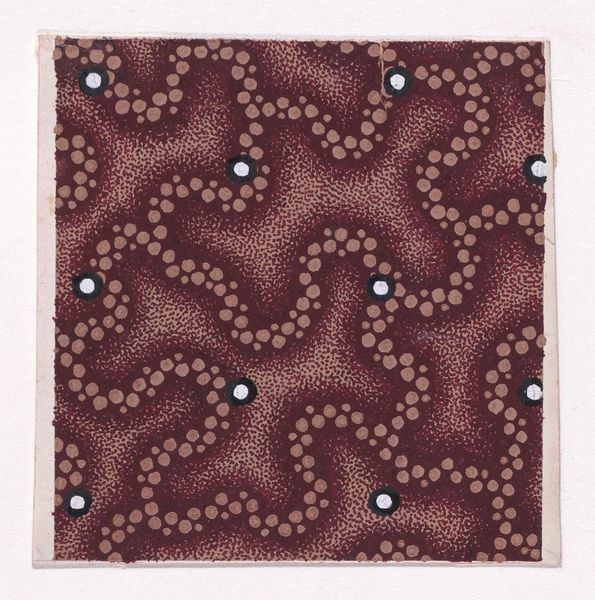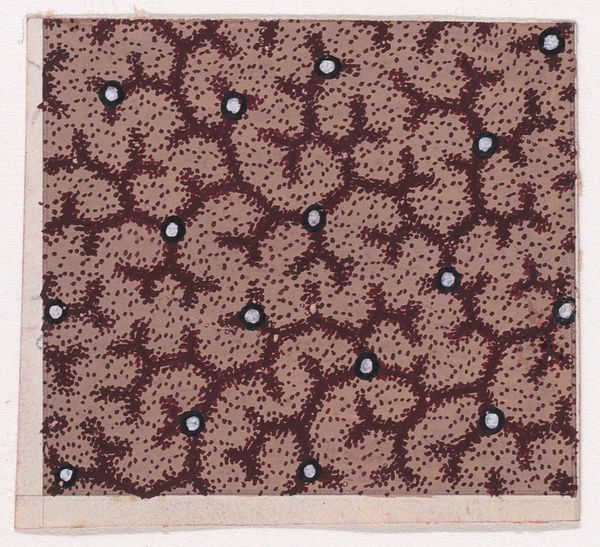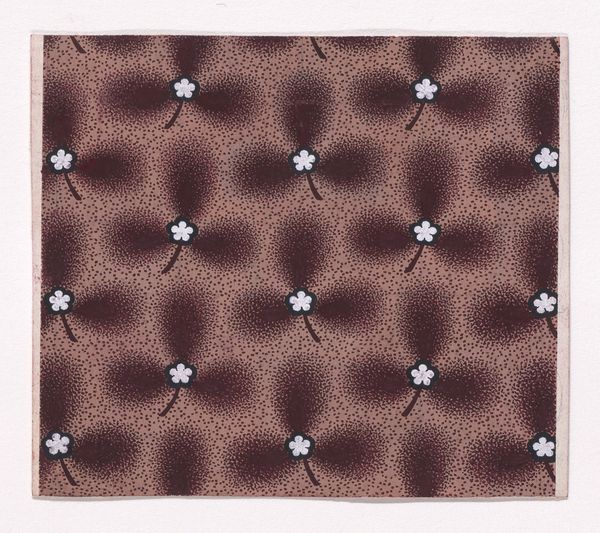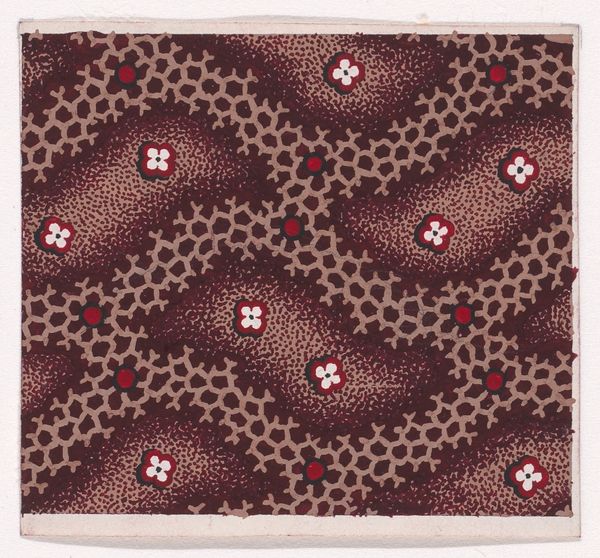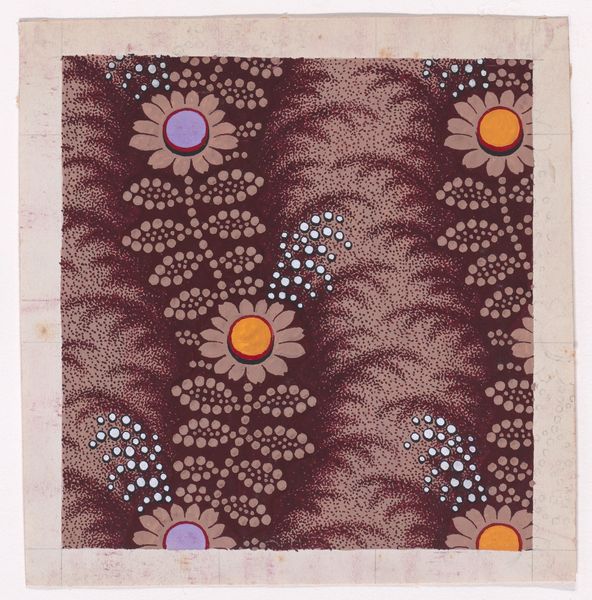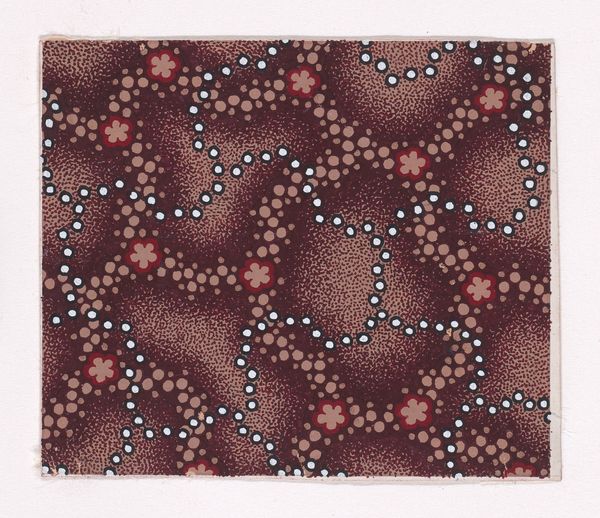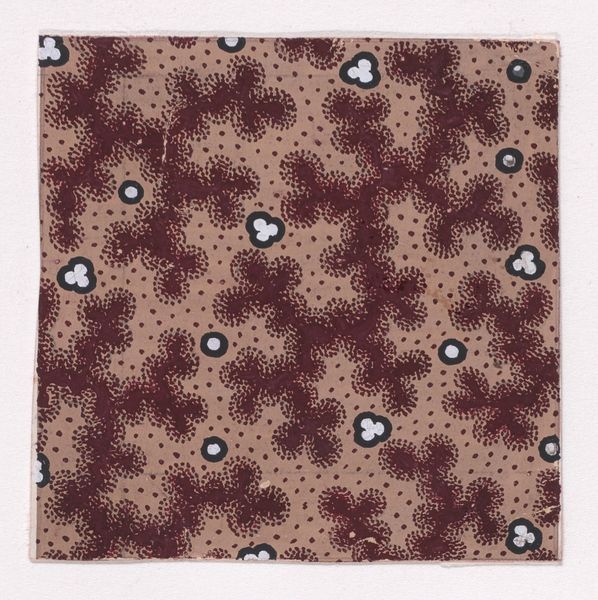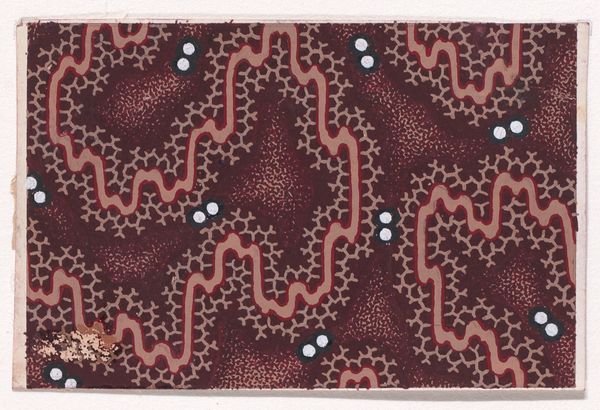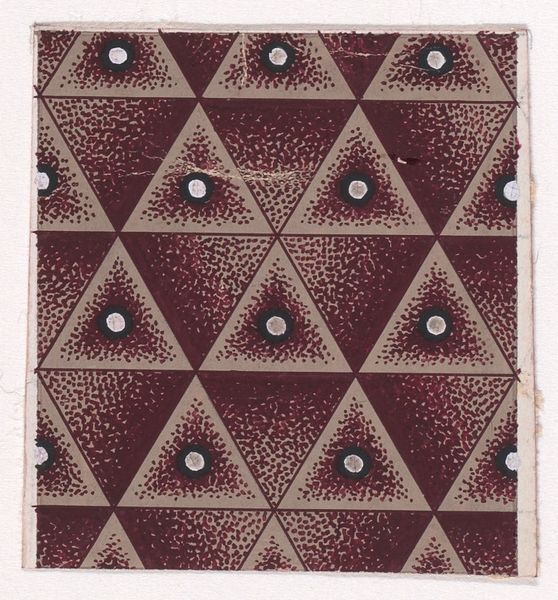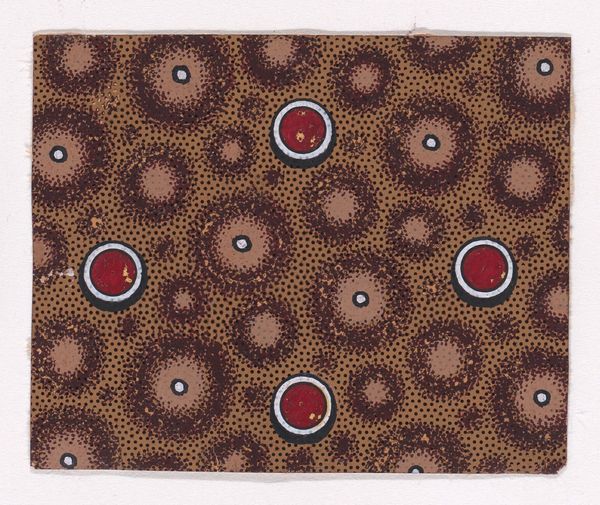
Textile Design with a Network of Circles with Pearls in the Middle 1840
0:00
0:00
drawing
#
drawing
#
geometric pattern
#
organic pattern
#
geometric
Dimensions: Sheet: 2 1/8 × 2 1/4 in. (5.4 × 5.7 cm)
Copyright: Public Domain
Curator: Here we have a fascinating textile design from around 1840, created by an anonymous artist. It's titled "Textile Design with a Network of Circles with Pearls in the Middle," and it uses drawing and print techniques to create a unique visual experience. Editor: My initial reaction is that this design is unsettlingly mesmerizing. The way the circles pulsate outwards reminds me of looking into the abyss. What’s particularly striking is the stark contrast between the delicate background and the somewhat aggressive maroon or dark red spheres. Curator: The pattern is intriguing. The repetition, while aesthetically pleasing, might represent the cyclical nature of social structures or the confinement of individuals within a system. Think about the constraints placed upon women in textile production during that period, for instance. Did the anonymous artist seek liberation in the very act of its creation? Editor: It's impossible to overlook how the central 'pearls' seem to act as focal points. It calls forth connotations of surveillance and watchfulness that span throughout history in religious, state, and medical realms, among many others. I mean, who is doing the looking here? Curator: That's a potent observation. The "pearls," enclosed within these dark circles, almost appear trapped. And that raises the critical question of value, then: whose gaze and which contexts grant these objects—or people—worth? Considering the historical context of mass production and labor division, is there commentary on exploitation here? Editor: Certainly. Those 'pearls' do bring ideas of value and rarity. It is difficult to miss their visual impact, and considering their color--which isn't a true 'pearl' color—perhaps challenges our expectations of worth altogether. This textile might play into societal and political critique. Curator: It definitely compels us to delve into socio-economic implications of ornamentation and consumption. Patterns themselves, often deemed feminine or trivial, mask intricate dialogues concerning class and control. Editor: In this sense, it feels remarkably relevant. While aesthetically anchored in the 19th century, these design principles hold up in the modern era when surveillance and representation are questioned. Curator: Yes, there is something enduring about the way pattern, when charged with meaning, can reflect, distort, and ultimately, help us re-imagine systems of power. Editor: A very important contribution in seeing pattern not just as decoration, but an expression.
Comments
No comments
Be the first to comment and join the conversation on the ultimate creative platform.
